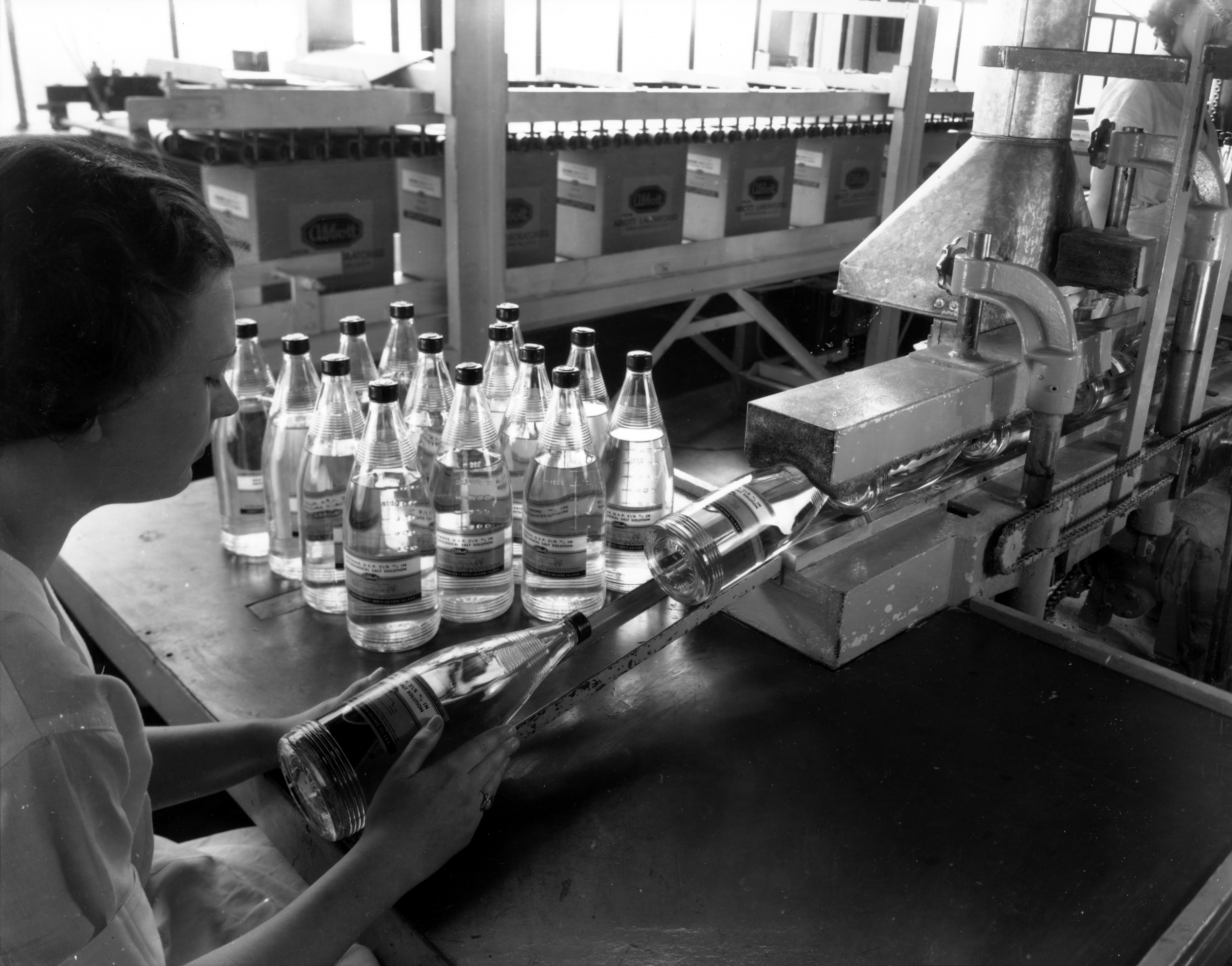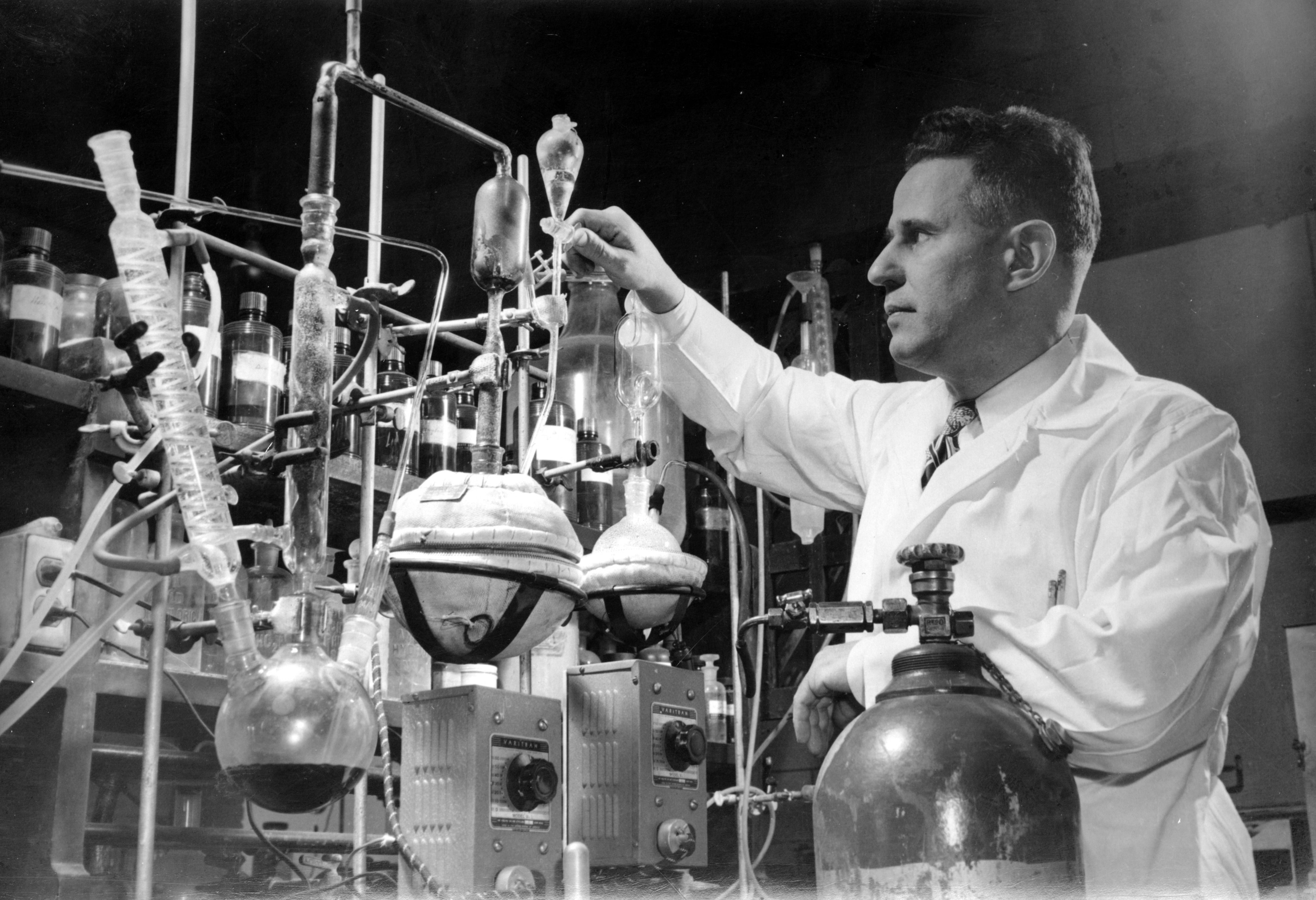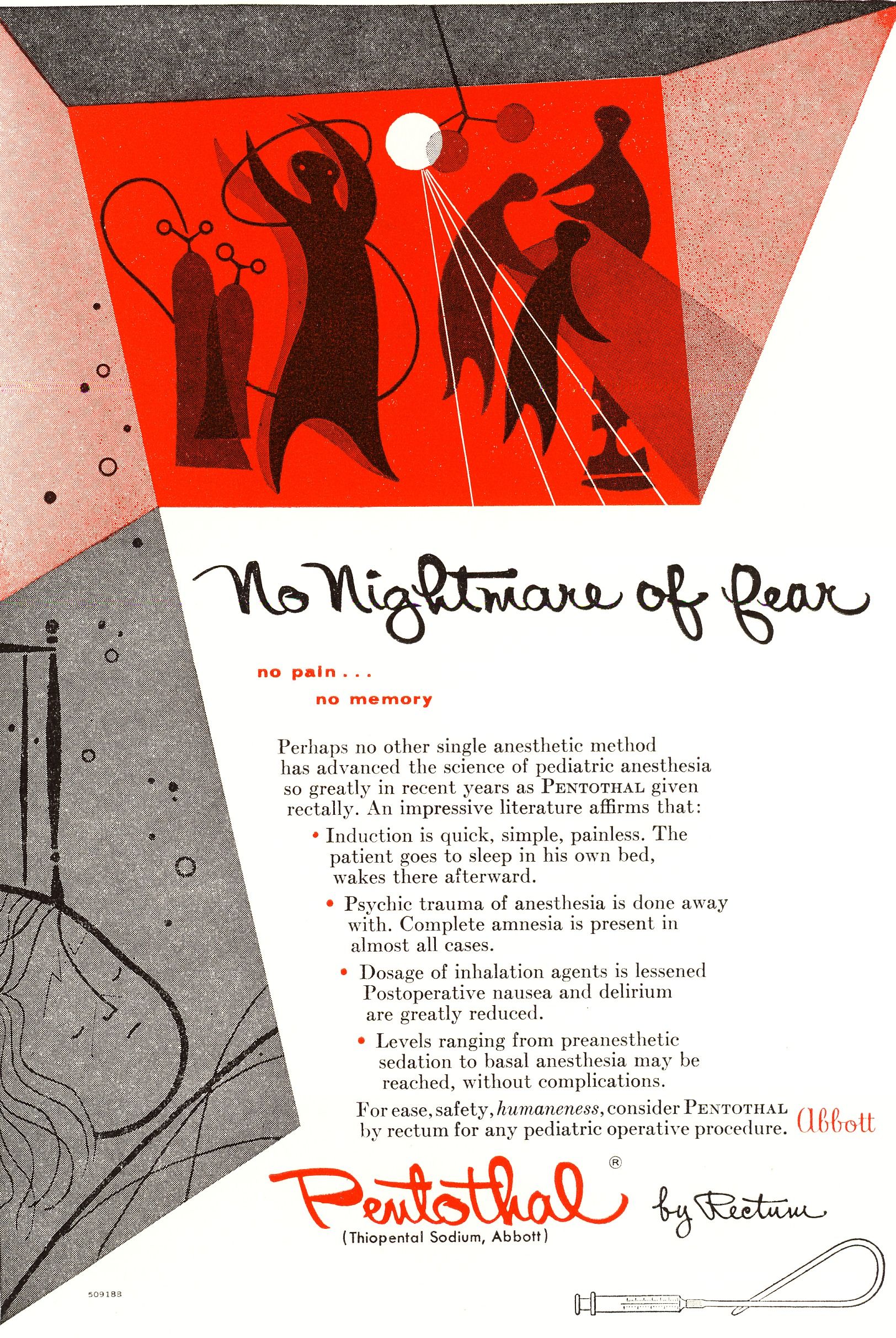
Image courtesy The Wood Library-Museum of Anesthesiology.

Dr. Tabern in the lab. Images courtesy The Wood Library-Museum of Anesthesiology.

Image courtesy The Wood Library-Museum of Anesthesiology.

Image courtesy The Wood Library-Museum of Anesthesiology.
Over the course of three years, Dr. Tabern and Dr. Volwiler screened over 200 compounds to arrive at thiopental sodium (trademarked “Sodium Pentothal®”). The chosen compound was a sulfur-bearing analogue of Nembutal®, a successful oral sedative-hypnotic, also developed by Drs. Volwiler and Tabern.
Sodium Pentothal only caused a few minutes of sedation (it leaves the bloodstream quickly), so it was followed up with a gaseous anesthetic, such as nitrous oxide. It became one of the most widely used anesthetics in the world.
Thousands of wounded soldiers during World War II owe their life to Sodium Pentothal. It was injected either on the battlefield or on the way to field hospitals to ease pain and shock.